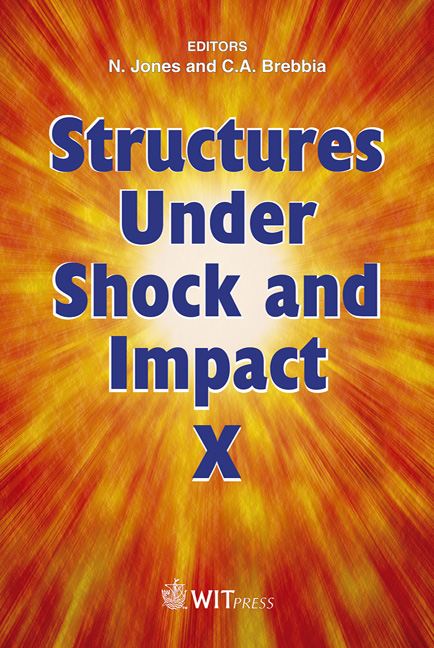Optimized Calculation Of High Strain Rate Stress-strain Curves
Price
Free (open access)
Transaction
Volume
98
Pages
9
Page Range
369 - 377
Published
2008
Size
430 kb
Paper DOI
10.2495/SU080361
Copyright
WIT Press
Author(s)
P. Verleysen & J. Degrieck
Abstract
The knowledge and understanding of high strain rate material behaviour have become increasingly important. For the dynamic characterization of materials very often split Hopkinson bar experiments are used. However, as will be shown, the specimen geometry and other parameters related with the actual test setup and execution have a distinct influence on the obtained stress-strain curves. In this contribution a technique is presented which iteratively corrects the stressstrain curve extracted from an experiment by combination of numerical simulations and experimental results. A major advantage of the technique presented here is that the stress-strain curve extracted from the experiment itself is corrected; no prior assumptions on the material behaviour have to be made. Keywords: high strain rate, split Hopkinson bar, Kolsky apparatus, stress-strain curve, optimization. 1 Introduction In numerous applications materials are subjected to high strain rate loading: fast forming processes, magnetic pulse or explosive welding techniques, vehicle crashes, etc. In order to understand and/or model these processes, knowledge of the strain rate dependent mechanical properties of the materials involved is crucial. In the strain rate range of 500 to 2000/s very often Split Hopkinson Bar (SHB) setups are used to subject materials to a high strain rate compression or tensile load. From measurements during a SHB experiment the dynamic stressstrain curve in the material can be calculated. However, from experiments, it is clear that the influence of the specimen geometry, or more general of the experimental setup, on the observed behaviour
Keywords
high strain rate, split Hopkinson bar, Kolsky apparatus, stress-strain curve, optimization.





